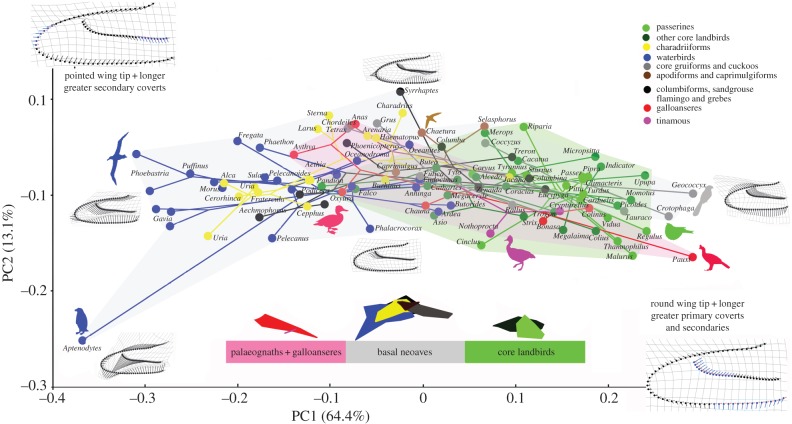Figure 2.
Major avian clades plotted in a wing phylomorphospace described by principal components (PC) 1 and 2 for the 105 taxon sample. The phylogenetic tree [51] is mapped in this morphospace, with internal nodes placed according to a squared-change parsimony optimization [55]. Major changes in wing shape along the two PC axes are depicted on deformation grids from the consensus wing (insets). Each landmark on the consensus wing represents the vector base, and arrows show the direction and magnitude of variation at any point along the wing. In the wing insets, changes (blue) along PC1 reflect a shortening of the greater primary coverts and greater secondary feather length. Changes (blue) along PC2 reflect a narrowing of the wing tip. Dot colours for individual taxa reference major avian subclades recovered in Jarvis et al. [51] (see also key). The morphospace occupied basal and successively more nested clades in Aves is depicted along the base of the figure. Passerine birds and other core landbirds move into a morphospace occupied by more basal taxa but at significantly different body sizes.

